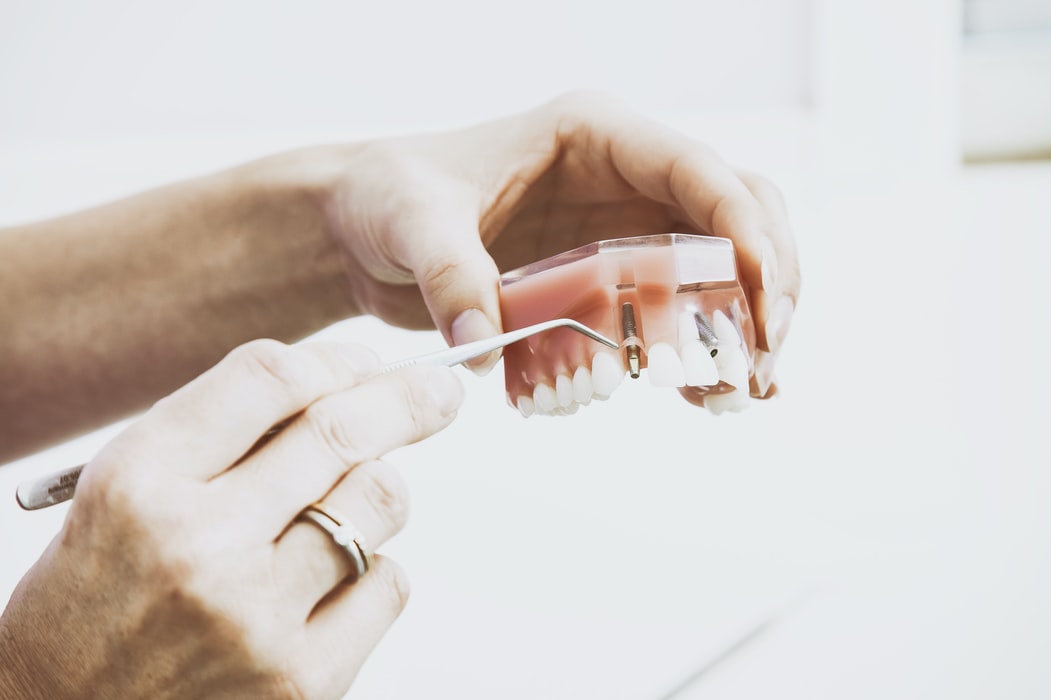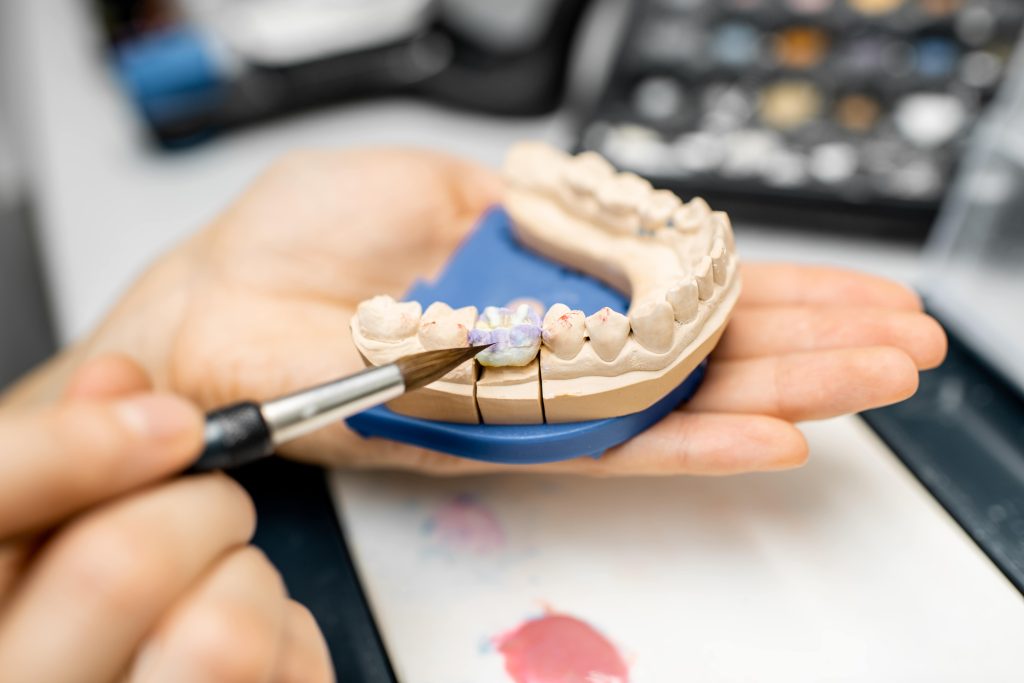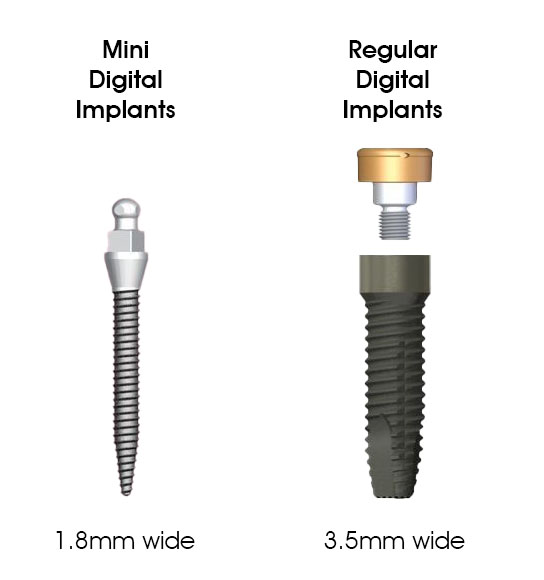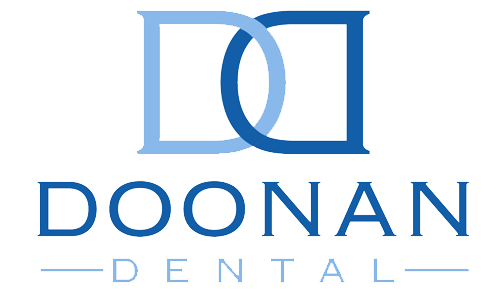Missing a tooth or a few can happen for all sorts of reasons. Whether it’s due to injury, decay, or other health concerns, the result is often the same: you might feel a bit self-conscious about your smile, or you might see other oral health issues like shifting teeth, jawbone loss, or changes in the way you chew or speak.
As a result, many patients look for a solution that not only restores function but also looks as natural as possible. Dental Implants are one of the most effective, long-lasting solutions for replacing missing or damaged teeth. And the best part? They don’t just look natural, they feel natural, too!
At Doonan Dental, we understand that the idea of getting dental work done, especially something like an implant, can feel a little daunting. But it doesn’t have to be! Thanks to modern advancements, dental implants are safer, more effective, and more comfortable than ever before. Plus, a little knowledge about what to expect can go a long way!
In this post, we’ll walk you through everything you need to know about dental implants, from how they work to who they’re for, to the step-by-step process and the benefits you can look forward to, so you can make a confident and informed decision about your dental health.
Do Missing Teeth Actually Matter?
It’s easy to think of a missing tooth as just a cosmetic concern, but the truth is, every tooth in your mouth plays an important role. Your teeth work together to help you chew comfortably, speak clearly, and keep your entire smile aligned and functional.
When even one tooth is lost, it can set off a chain reaction of oral health issues. The gap can cause surrounding teeth to shift out of place. This not only affects your bite but also makes your teeth harder to clean, increasing your risk of tooth decay and gum disease. In fact, increased gum disease is one of the most serious long-term side effects of tooth loss!
The opposing tooth (the one that used to bite against the missing one) may begin to move or “super erupt” into the empty space, potentially exposing its root. If left untreated, this can also lead to sensitivity, inflammation, and even further decay.
Missing teeth can also impact your ability to speak clearly. Many of the sounds we use in everyday speech rely on the placement of our teeth. So gaps can cause speech disorders or make certain words harder to pronounce.
Over time, tooth loss can even change the shape of your face. Without a tooth root to stimulate it, the jawbone in that area can start to deteriorate. This bone loss affects how your jaw supports your lips and cheeks, which can lead to a sunken appearance and even premature aging.
And, beyond all the physical changes, missing teeth can take a toll on your confidence! Smiling, laughing, and even eating around others may start to feel uncomfortable. That’s why it’s so important to explore solutions early. The sooner you take action, the easier it is to protect your smile, your oral health, and your confidence for the long term.

Common Causes Of Tooth Loss
Tooth loss doesn’t happen overnight, it’s usually the result of ongoing issues or unexpected events. Understanding the most common causes can help you take steps to protect your smile for the long run and determine the best course of treatment if you do experience tooth loss.
- Gum disease (periodontal disease): This is the leading cause of tooth loss in adults. Gum disease gradually destroys the bone and tissue that support your teeth, eventually causing them to loosen or fall out.
- Tooth decay: Untreated cavities can damage teeth beyond repair. Tooth decay is the top problem seen at dental visits, and about 1 in 3 Australian adults currently has untreated decay.
- Physical injuries: Accidents, sports injuries, and falls can cause teeth to crack, break, or be knocked out completely.
- Smoking (past or present): Smoking significantly increases the risk of gum disease and tooth loss.
- Medical conditions: Conditions like diabetes, high blood pressure, and rheumatoid arthritis are also linked to a higher risk of losing teeth.
- Poor oral hygiene habits: Infrequent brushing, flossing, and dental check-ups can lead to plaque buildup, decay, and gum disease.
- Age-related factors: The likelihood of tooth loss increases with age. In fact, Australians aged 15–34 have an average of 3.2 missing teeth, and those aged 75 and over have an average of 13 missing teeth.
What Are Dental Implants?
Dental implants are one of the most reliable and long-lasting ways to replace missing teeth. Put simply, they are small, biocompatible (non-toxic to living tissue) posts that are surgically placed into your jawbone. They act as artificial tooth roots, providing a strong and stable foundation for a replacement tooth that looks, feels, and functions just like the real thing.
A complete dental implant restoration is made up of three main parts:
- The Implant (or Fixture): This is the post that gets placed into your jawbone. Made from strong, body-friendly materials, the implant fuses with your natural bone through a process called osseointegration. This creates a solid base beneath the gumline, just like a natural tooth root.
- The Abutment: Once your implant has healed and bonded with the bone, an abutment is attached. This small connector piece sits just above the gumline and links the implant to your visible crown. Abutments can be made from titanium, ceramic, or even gold, depending on your individual needs.
- The Crown (or Restoration): This is the part you see when you smile; the natural-looking replacement tooth that’s custom-made to match the colour, shape, and size of your surrounding teeth. Crowns are usually made from porcelain or ceramic for a lifelike appearance, but metal alloys are sometimes used too.
How Do Implants Mimic Natural Teeth?
One of the best things about dental implants is how well they mimic the look and function of natural teeth. Unlike other tooth replacement options:
- The implant post acts just like a tooth root, stimulating the jawbone when you chew. This helps preserve bone density and keeps your facial structure intact. Most implant posts are made from titanium, a super-strong and corrosion-resistant metal with an excellent track record (about a 98% success rate). Your body accepts titanium very well, which is why it’s been the gold standard in implant dentistry for decades.
- The crown blends seamlessly with your natural teeth, so no one can tell the difference.
- You can bite, chew, talk, and smile with confidence, with no slipping dentures or discomfort.
The Purpose and Benefits of Dental Implants
There are many reasons a patient might opt for a dental implant. Let’s break down why they’re considered one of the best tooth replacement options available today.
Restoring Everyday Function
One of the biggest benefits of dental implants is how closely they mimic your natural teeth in both look and function. Unlike dentures that can shift or feel bulky, dental implants are fixed in place so you can:
- Chew with confidence: Implants restore full bite strength, allowing you to enjoy all your favourite foods without worry.
- Speak clearly again: Missing teeth or loose dentures can affect your speech, making words harder to pronounce. With implants, your tongue and mouth move naturally, bringing back clarity and comfort in conversation.
- Smile without hesitation: Because implants look so natural and stay put, there’s no need to worry about them slipping or shifting at the wrong moment.
Protecting Your Jaw and Facial Structure
When a tooth goes missing, the bone underneath it stops receiving stimulation, leading to bone loss. Research shows that the jawbone can shrink by up to 25% in the first year after losing a tooth.
However, dental implants are the only tooth replacement option that actively stimulates the jawbone through a process called osseointegration. This stimulation helps preserve bone density and facial structure, preventing the sunken, aged appearance that can come from long-term tooth loss.
Supporting Emotional Wellbeing and Self-Esteem
Dental implants don’t just improve how you eat and speak, they also make a powerful impact on how you feel! Studies show that 85% of patients report noticeable improvements in their self-esteem and mental health after getting implants. Whether you’re laughing with friends or speaking at work, implants help you feel more at ease, without the fear of your teeth slipping or gaps showing.

Common Types of Dental Implants
No two smiles are the same, and modern dentistry offers different types of dental implants to suit different needs. Not everyone is eligible for traditional dental implants, so alternatives have been developed to accommodate varying bone structures, health conditions, and personal preferences.
- Endosteal Implants: These are the most common type of implant used today. Dentists place them directly into your jawbone, where they act like artificial tooth roots. They’re typically made of titanium and shaped like tiny screws or cylinders. For this option to work, you’ll need enough healthy bone in your jaw to hold the implant securely.
- Subperiosteal Implants: These sit on top of your jawbone, just under the gum. A custom metal framework holds the replacement teeth in place. This type is a great choice for people who have less bone density and want to avoid bone grafting. The procedure is less invasive, and healing time is often quicker than with traditional implants.
Single, Multiple, and Full-Arch Implants
Dental implants can replace one tooth or all of them, depending on what you need:
- Single-Tooth Implants: A single implant supports a custom crown without affecting your surrounding healthy teeth.
- Implants for Multiple Teeth: If you’re missing several teeth, you don’t need an implant for each one. Instead, two or more implants can support a dental bridge, making this an efficient and cost-effective option.
- Full Arch Replacements: These advanced techniques use just four implants to support a full arch of replacement teeth. The implants are angled strategically, which often removes the need for bone grafting. You’ll get a secure, natural-looking smile, and in many cases, you can start using your new teeth the same day.
Mini Dental Implants
Traditional dental implants need to be installed into the jawbone. However, not every patient has the jaw density to support full-sized implants without undergoing additional procedures like bone grafting. Mini dental implants offer a less invasive alternative, they’re thinner, require less bone, and can often be placed in a single visit with minimal recovery time.
- They’re about half the size of regular implants (less than 3mm wide).
- The procedure is minimally invasive, no stitches, no general anaesthesia, and often done in one visit.
- They’re more budget-friendly, too
- While they’re not suitable for every case, mini implants can be a great option for people looking for a simpler tooth replacement solution.

Dental Implant Procedure: Step-by-Step
Dentist visits are notorious, which is why many people avoid making an appointment before it’s too late. However, understanding what’s involved, especially when it comes to something like dental implants, can make the process feel far less intimidating! Speaking with your dentist, asking questions and voicing your concerns are all important steps to helping you feel confident and comfortable.
Here’s how the dental implant process typically unfolds, and what you can expect along the way:
1. Initial Consultation & Assessment
Every great smile starts with a thorough plan. During your first visit, your dentist will take dental X-rays and possibly 3D scans to assess your oral health, bone structure, and suitability for implants. They’ll also go through your medical history to ensure you’re a good candidate and build a personalised treatment plan that suits your needs.
2. Tooth Extraction (if needed)
If the implant site still has a damaged or unhealthy tooth, it may need to be removed. In some cases, the implant can be placed immediately after the extraction. Other times, the area may need to heal for a few months first. Your dentist will let you know the best approach.
3. Bone Grafting (if required)
Not everyone has enough bone to support an implant. If your jawbone needs a little extra support, your dentist might recommend a bone graft. This strengthens the area using natural or synthetic materials, and healing usually takes around 3 to 6 months before moving to the next step.
4. Implant Placement Surgery
Once the site is ready, your dentist will gently place the implant into your jawbone. You’ll be given local anaesthesia to keep you comfortable throughout the procedure. The implant post is inserted deep into the bone, and the gum is stitched closed so healing can begin.
5. Osseointegration & Healing
Over the next few months, your jawbone naturally fuses with the implant in a process called osseointegration. It’s this biological bonding that gives implants their strength and stability. Healing usually takes 3–6 months, depending on your bone health and healing response.
6. Abutment Placement & Crown Fitting
Once your implant is fully integrated, a small connector piece called an abutment is attached to the implant post. After a short healing period, your dentist will take impressions to design a custom-made crown that fits beautifully with your natural teeth. Once the crown is in place, you’re all set!
Risks, Recovery, and Aftercare
Dental implants are a trusted and long-lasting solution for missing teeth, with impressively high success rates. But like any surgical procedure, it’s important to be aware of the risks, understand the recovery process, and follow proper aftercare to ensure the best possible outcome.
Risks include infection at the implant site, nerve irritation causing temporary numbness or tingling, or damage to nearby teeth or structures. In rare cases, especially when placing implants in the upper jaw, sinus issues may arise if the implant extends into the sinus cavity.
Smoking is one of the biggest risk factors for implant failure. It slows down healing and the process where your jawbone fuses with the implant. If you’re a smoker considering implants, speak to your dentist about strategies to improve your chances of success.
What to Expect During Recovery
Most people recover from the initial implant surgery within 1–2 weeks. During this time, it’s common to experience some swelling, tenderness, and minor bleeding. Over-the-counter pain relievers can help. To ease swelling, apply an ice pack on and off for the first two days.
Taking care of your implant properly in the days and weeks after surgery is key to long-term success:
- Brush gently with a soft-bristled toothbrush and use an antimicrobial mouthwash to keep the area clean
- Stick to soft foods for the first few days, and slowly reintroduce harder foods as you heal
- Avoid alcohol, smoking, hot drinks, and using straws—these can all interfere with healing
- Take it easy in the first 24–48 hours and give your body time to rest
- Follow your dentist’s instructions and take any prescribed medications as directed
Dental implants might not be natural teeth, but they still need proper care! Daily brushing, flossing, and professional cleanings every 3–6 months are essential for keeping your implants in great shape. With good oral hygiene and regular check-ups, your implants can last for decades, sometimes even a lifetime.

How Much Do Dental Implants Cost?
If you’ve been looking into dental implants, you’ve probably noticed that the cost can vary a lot. Dental implants in Australia can range anywhere from $2,500 to as much as $35,000, depending on your individual needs.
So, what affects the price?
Several factors come into play. The materials used, your dentist’s level of experience, and even where you live in Australia can influence the total cost. Additionally, if you need more than one tooth replaced, the cost increases accordingly.
*Keep in mind, these are average estimates, and the actual cost will depend on your unique case, the technology used, and your chosen dental provider.
What about insurance and rebates?
Unfortunately, Medicare doesn’t cover dental implants, as they’re not considered “medically necessary” under their current guidelines. Private health insurance may cover part of the cost under major dental, but this often comes with a 12-month waiting period.
Fortunately, many dental clinics understand the investment involved and offer flexible payment plans so you can spread the cost over time. Some payment assistance programs might also be available for eligible patients. Just ask your clinic what support they offer.
Is a Dental Implant Right for You?
Dental implants are the best long-term solution for missing teeth, with benefits that go way beyond the reach and influence of just looks. These replacements give you back your full chewing power and keep your jawbone healthy and teeth aligned. While they do have an initial investment, the long-term value they offer in comfort, durability, and confidence is hard to beat.
If you’re tired of living with gaps in your smile or dealing with uncomfortable dentures, dental implants might be the game-changer you’ve been looking for. And the team at Doonan Dental are here to restore your smile’s function and appearance.
As Sunshine Coast–based dental experts, we offer both traditional dental implants and mini dental implants to suit a range of needs, budgets, and jawbone structures. We’ll walk you through the entire process to ensure you are informed, confident and comfortable. Book your consultation today


